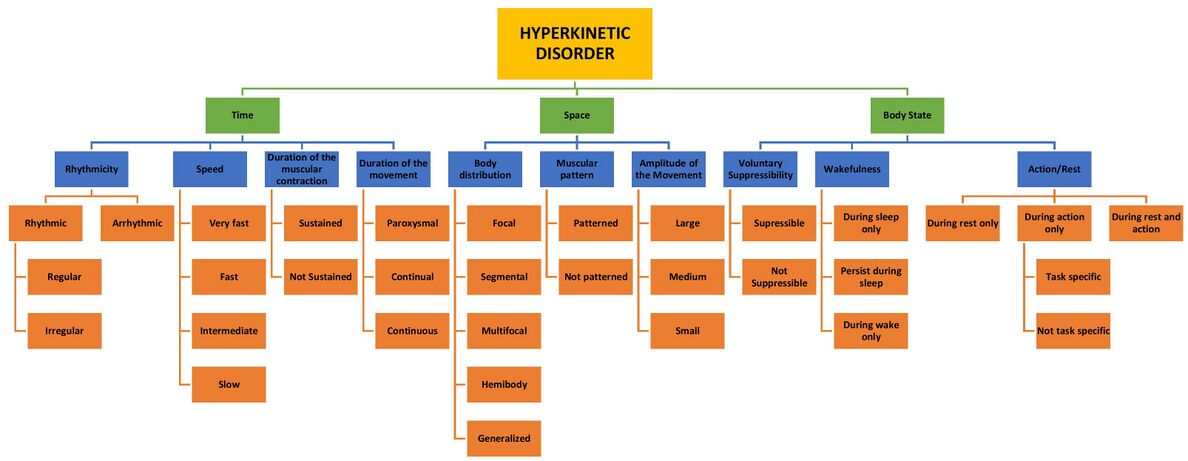Hyperkinetic Movement Disorder
Introduction[edit | edit source]
Hyperkinetic movement disorders also referred to as Dyskinesias are characterized by abnormal, often repetitive, involuntary movements overlapped to normal motor activity. Its 5 major types are Tremors, Chorea, Dystonia, Myoclonus and Tics.
Etiology[edit | edit source]
Common etiologies seen in this condition
- Genetic abnormalities
- Neurodegenerative diseases
- Structural lesions
- Infection
- Drugs
- Psychogenic problems
Pathophysiology[edit | edit source]
Among all HMDs there appears to be decreased neural firing rates in the inhibitory output nuclei of the basal ganglia leading to a subsequent disinhibition of thalamocortical activity. Sensory abnormalities may also have a role.
Cardinal Features[edit | edit source]
Hyperkinetic movement disorders can be grouped according to distinct cardinal features, which can be described in terms of
- Time
- Space distribution
- Body state’s impact.
Classification[edit | edit source]
There are 5 types of tremors







